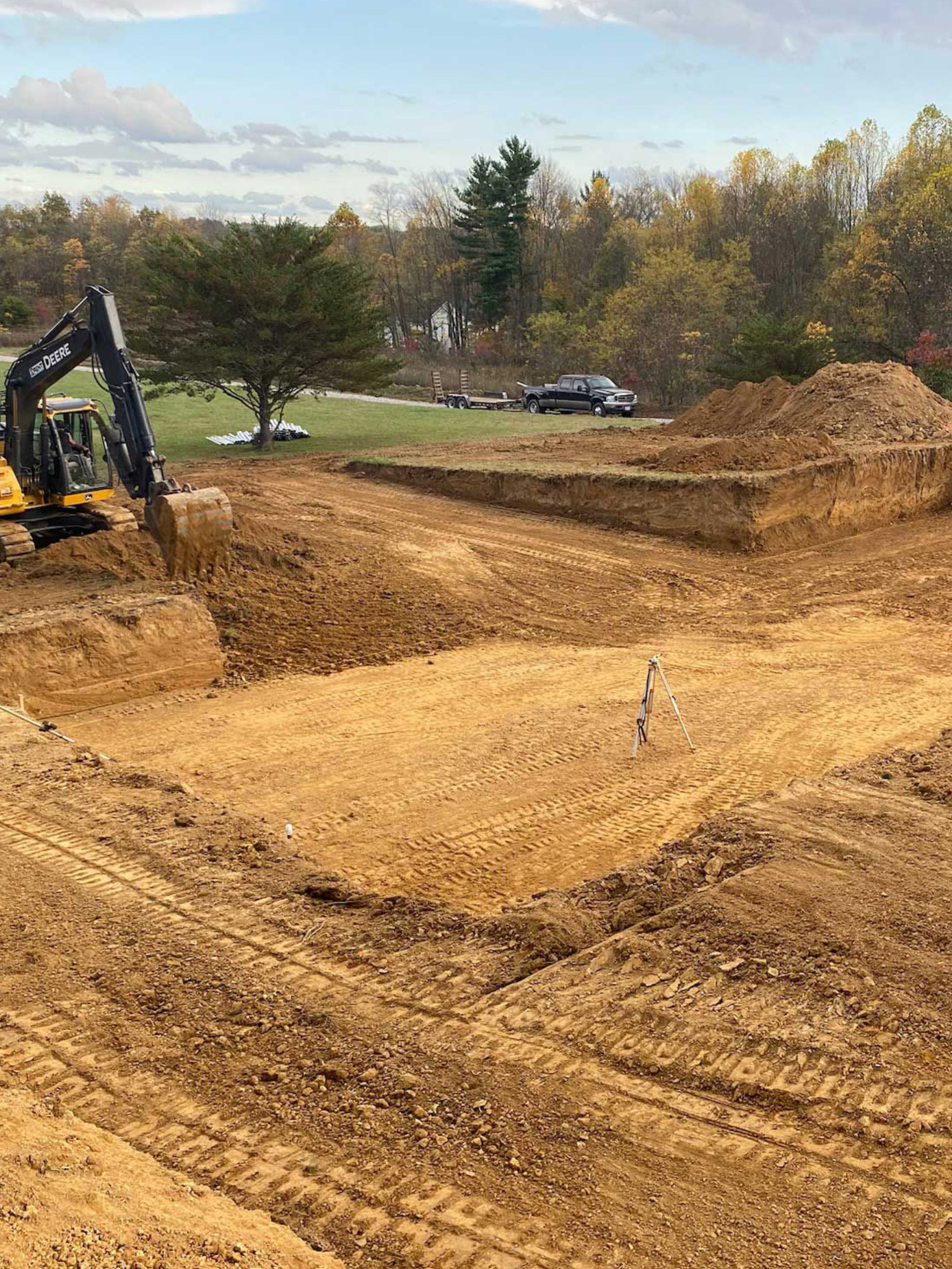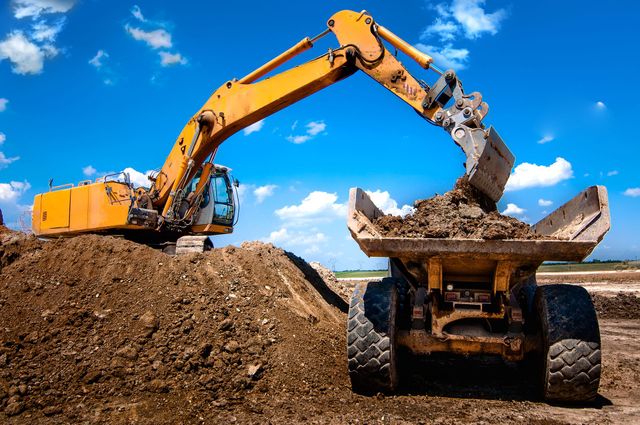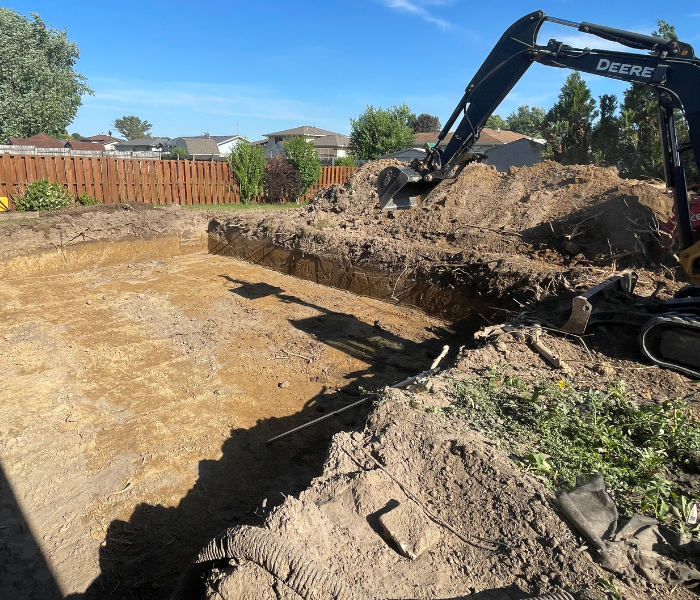Extensive Expedition: The Scientific Research Behind Superior Excavation Practices
The world of excavation practices is a domain name where science intertwines with craftsmanship to unearth the secrets concealed underneath the planet's surface. From old hand tools to modern hydraulic excavators, the evolution of excavation strategies has actually been a testimony to human resourcefulness and technical advancements. However, what really establishes remarkable excavation methods apart is a deep understanding of geological principles, combined with the use of advanced devices and techniques. By checking out the science behind these practices, we can reveal the secrets that lie beneath our feet and value the precision and knowledge that go right into every dig.
Advancement of Excavation Techniques
Throughout history, the development of excavation techniques has actually played a critical function in advancing building techniques and historical explorations. From the basic devices used by our forefathers to the sophisticated machinery utilized in modern-day times, the development of excavation techniques has actually dramatically transformed just how we approach various jobs.
In ancient times, manual labor with fundamental tools such as shovels, wheelbarrows, and pickaxes was the key method of excavation. This labor-intensive process limited the deepness and range of excavations, usually leading to slow-moving progress and restricted accessibility to certain sites. Nonetheless, as worlds progressed, so did the methods and devices used for excavation.
The Industrial Transformation noted a transforming factor in excavation techniques with the intro of steam-powered machinery. In contemporary times, modern technology plays a crucial duty in excavation, with innovations like General practitioner systems, drones, and 3D scanning enhancing accuracy and performance in the area.
Function of Technology in Excavation

The assimilation of advanced technology has actually fundamentally revolutionized the area of excavation, improving accuracy and efficiency to unprecedented degrees. One of the key technical improvements that has significantly influenced excavation practices is the application of general practitioner systems. These systems enable accurate mapping of excavation websites, allowing operators to precisely locate below ground utilities and frameworks. Furthermore, making use of telematics in excavation equipment has actually allowed real-time surveillance of equipment performance, bring about proactive upkeep and increased operational performance.
In addition, the development of 3D modeling and simulation software program has streamlined the preparation procedure for excavation jobs. Designers and drivers can currently envision the whole excavation process before breaking ground, recognizing possible challenges and optimizing operations. Together with this, the application of drones in excavation activities has assisted in aerial studies, volumetric measurements, and site assessments with unrivaled speed and accuracy.
Geological Principles in Excavation
An understanding of geological concepts is essential for guaranteeing the architectural integrity and stability of excavation websites. Geological factors play an visit this site right here essential function in identifying the expediency and security of excavation projects (lancaster excavation). One vital geological concept to take into consideration is the kind of dirt or rock existing at the site. Different soil types, such as crushed rock, sand, or clay, have varying levels of stability and call for various excavation methods. Cohesive my website dirts like clay might need extra support to prevent collapses, while sandy dirts might be susceptible to erosion during excavation.
Furthermore, the geological framework of the location, consisting of faults, cracks, and rock formations, have to be carefully assessed to determine potential threats and difficulties. Digging deep into near mistake lines or unstable rock developments can bring about instability and prospective dangers. By conducting detailed geological surveys and evaluation, engineers and excavators can create strategies to alleviate threats and guarantee the successful conclusion of excavation tasks. Eventually, incorporating geological concepts right into excavation methods is essential for accomplishing risk-free, reliable, and sustainable results.

Latest Tools for Excavation
In the realm of excavation practices, contemporary technologies in tools have transformed the effectiveness and precision of excavation processes. One of the most recent tools making waves in the industry is the use of drones equipped with advanced imaging technology. These drones can provide detailed airborne studies of excavation websites, using real-time data on topography and prospective threats. This details help in much better planning and decision-making during the excavation procedure.
Another cutting-edge device gaining appeal is the implementation of 3D printing technology for developing custom-made excavation equipment. This permits for the manufacturing of specialized tools that are customized to the particular requirements of a job, enhancing effectiveness and lowering downtime.
In addition, improvements in materials scientific research have brought about the advancement of stronger and extra durable excavation devices. septic ohio. Tungsten carbide-tipped excavator add-ons, for example, deal remarkable performance in difficult ground problems, improving efficiency on-site
Science's Influence on Excavation Practices

In addition, scientific study on soil mechanics and geotechnical design has actually offered beneficial insights into soil habits, allowing excavation experts to make educated choices regarding excavation techniques and dirt stablizing techniques. Generally, scientific research continues to drive technology and enhancement in excavation techniques, making excavation tasks extra effective, affordable, and lasting.

Conclusion
To conclude, the development of excavation methods has actually been greatly influenced by developments in innovation and a much deeper understanding of geological principles. The most up to date devices and tools made use of in excavation have actually boosted performance and precision in the area. The application of clinical expertise find out this here has substantially improved excavation methods, bring about extra lasting and reliable approaches for digging deep into different sorts of products.
In the realm of excavation techniques, modern developments in tools have actually revolutionized the efficiency and accuracy of excavation procedures. By leveraging clinical concepts, the excavation market has actually been able to substantially boost effectiveness, precision, and security in excavation procedures. GPR enables excavation teams to non-invasively scan and map subsurface structures, utilities, and potential risks, enabling them to intend excavation tasks with higher precision and lowered threat of mishaps.
Additionally, clinical study on soil mechanics and geotechnical engineering has offered beneficial insights right into dirt behavior, allowing excavation professionals to make informed decisions regarding excavation techniques and soil stabilization methods. Generally, scientific research continues to drive advancement and enhancement in excavation methods, making excavation jobs much more effective, economical, and sustainable.